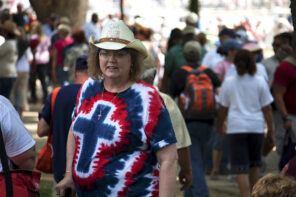Christian ethicist David Gushee recently coined a phrase that may stick around for a while: “half-churched Christians.” Mainline Protestant pastors like myself are more than familiar with gloomy prognostications about burgeoning hordes of the “unchurched” and “nones.” Somehow, “half-churched” sounds more encouraging. Half a loaf is better than none, is it not?
Gushee is bemoaning a changed perception in American Christianity: weekly Sunday worship attendance is no longer even an aspirational ideal. Twice a month, at best, is more like it. For screen-obsessed 21st-century Christians—who, like the biblical Martha, are “distracted by many things”—even that may be a high bar.
My brother Dave has just finished a Ph.D. in medieval literature. Recently, he emailed me a snippet from an ancient manuscript he ran across in his research. Given my occupation, he thought I’d find it amusing. In the Year of Our Lord 734, the Venerable Bede penned these lines to Egbert, Archbishop of York:
This kind of observance and devout sanctification to God has been so long absent from nearly all the laymen of our province, through the carelessness of teachers, as to be almost foreign to it, so that those among them who are more religious do not presume to participate in the sacred mysteries unless at the Lord’s Nativity, Epiphany and Easter, though there are numerous blameless people of chaste conduct, boys and girls, young men and maidens, old men and women, who could without a grain of doubt participate in the celestial mysteries every Sunday, or also on the nativities of the holy apostles and martyrs… [trans. by Dorothy Whitelock, in English Historical Documents, c.500–1042, 2nd ed., London: Eyre Methuen, 1979, 799–810:808.]
Turns out that half-churched is not a new concept. Clerical grousing over empty pews has been happening—off and on—for a very long time.
There’s something reassuring in that. Way back in 734, Bede was bemoaning the church’s death-spiral—which was not, in fact, happening. Following his time-honored example, down-in-the-mouth pastors still complain about AWOL parishioners. But maybe we shouldn’t.
Worship participation is cyclical, church historians tirelessly remind us. In colonial America, fewer than 20 percent of Americans were warming a pew on any given Sunday. In the generations since, worship attendance has waxed and waned, as Americans have surfed the spiritual swells of Great—and not so great—Awakenings.
The Eisenhower and Kennedy presidencies marked the high-water point of one of these awakenings. It wasn’t an awakening in the classical sense. There was no George Whitefield riding the length and breadth of the Colonies on horseback—although we did have Billy Graham baiting Reds and filling football stadiums. What packed American pews was an unprecedented surge of church participation fueled by millions of returning G.I.s, eager to leave the moral horrors of Europe and the Pacific behind them. Navigating what they perceived as perilous waters between the twin reefs of fascism and communism, G.I.-generation parents looked to the church for moral instruction for their children. Sunday Schools boomed along with their babies, but when those children came of age, it was straight into Woodstock, Vietnam War protests and “Don’t trust anyone over 30.”
Sometime in the mid-to-late 1960s, worship attendance quietly peaked. The pendulum had reached the limit of its swing. As it has continued to swing back past the center and beyond, pastors like me puzzle over how to reach spiritual-but-not-religious millennials. Some colleagues—even gifted communicators—have wearied of the struggle, taking their divinity degrees and leaving the parish for whatever other work they can find. Others, like old Bede and myself, stick around, reminding ourselves that even the half-churched are still the church.
In a few days, on Easter, we preachers will look out over our sermon notes and behold the blessed vision of a full sanctuary once again, knowing that—with all the half-churched Christians out there—we won’t see the like again until Christmas. Can it be long before the pendulum reaches the opposite extremity of its swing?





